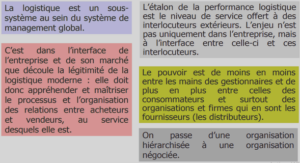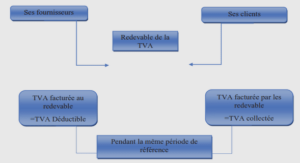Study sites
Two hybrid poplar plantations were established in spring 2003 in the region of Abitibi-Temiscamingue, Quebec, Canada. The first plantation was established on an abandoned farmland site near the locality of Amos (48° 35′ N, 78° 05′ W), which is part of the western balsam fir-paper birch (Abies balsamea – Betula papyrifera) bioclimatic domain (Grondin 1996). This site is part of the clay belt of Quebec and Ontario resulting from deposits left by the proglacial Lakes Barlow and Ojibway (Vincent and Hardy 1977). The soil texture is a heavy clay Gray Luvisol (Canada Soil Survey Committee 1987). The average number of degree-days above 5° C for the region range from 1215 to 1450 and has had a yearly rainfall between 610 to 680 mm for the last three decades (Environment Canada 2004). No agricultural activity had been done on this site for the last 25 years. The site was dominated by grasses and a few patches of alder (Alnus incana ssp. rugosa), willow (Salix spp.) and trembling aspen (Populus tremuloides Michx.).
The second plantation was established on a previously forested site located near to the locality ofRollet (47° 92′ N, 79° 18′ W) and is part of western balsam fir – yellow birch (Betula alleghaniensis) bioclimatic domain (Grondin 1996). This site was previously dominated by a trembling aspen forest which was commercially harvested in 2000. Its soil type is classified as a Humo-Ferrique Podzol with a sandy-loam soil texture (Agriculture Canada Expert Committee on Soil Survey 1987). The planting sites were ploughed to a depth of 30 em in the fall of 2002, followed by disking in the spring of 2003 to level the soil and incorporate organic matter to mineral soil as well as to remove the remaining stumps and logs. The trees were planted in the first week of June at the farmland site and in the first week of July at the forest site. Dormant, bare-root hybrid poplar trees of approximately 1.5 m in height (table 2.1) were planted 30 em deep at a 3 x 3 m spacing. Three locallyproduced clones from the Quebec Ministry of Natural Resources were used: 747210 (P. balsamifera x trichocarpa), 915005 (P. balsamifera x maximowiczii) and 915319 (P. maximowiczii x balsamifera). The fertilizers were applied according to a 3N x 3P x 2K factorial design within each of the three hybrid poplar clones (split plot). The clones were randomized and replicated into 3 blocks. The treatment unit was two trees of one clone (n = 324 per site). Fertilizers used were granules of ammonium nitrate (34.5-0-0) at 3 levels (0, 20 and 40 g/tree; equivalent to 0, 22 and 44 Kg/Ha), triple-superphosphate (0-45-0) at 3 levels (0, 25 and 50 g/tree; equivalent to 0, 28 and 56 Kg!Ha), and potassium sulfate (0-0-50) at 2 levels (0 and 20 g/tree). The fertilizers were applied at planting by inserting the granules into a spade slit made at 15 em from the trees to a depth of about 15 em. Vegetation control was done twice a year (end of June and August) by cross-cultivating the plantations using a farm tractor.
Discussion
Placed fertilization at planting successfully increased early growth of all hybrid poplar clones used in this study. At the farmland site, the greatest stem volume growth responses after the first growing season were obtained with N or P fertilization separately for clones 915319 and 747210 or in combination, for clone 915005 (Figs. 2.1, 2.3 and 2.6). Unfertilized trees of clones 747210 and 915005 had similar N 😛 ratios of about 17 (Fig. 2.8 a,b ). This corresponded to a N and P colimitation, but more so P than N, as reflected by the growth response of these two clones to the fertilizers (Figs. 2.1 and 2.3). Unfertilized trees from clone 915319 had lower N:P ratios than the other clones (Fig 2.8c), suggesting that growth of this clone was more limited by N (Koerselman and Meuleman 1996; Tessier and Raynald 2003). However, its growth response to P fertilization was slightly greater than to N fertilization (Fig. 2.6). In this case, low N:P ratios did not exactly reflect a nutrient limitation but was rather a result of poor stock quality; trees from clone 915 319 had significant stem dieback at planting (Table 2.1 ), which resulted in lost nutrients and stimulated height growth to restore root-to-shoot ratios. In fact, their N:P ratios increased to similar levels to the other clones during the second growing season, reflecting more accurately the nutrient requirements of this clone.
The unimodal graphical display of N 😛 foliar ratios at the farmland site (Fig. 2.8 a,b,c), indicates that maximal biomass production was obtained at critical or optimal N:P ratios (Gtieswell 2004). The ranges of optimal N:P ratios varied among clones and sites, but there was a general trend showing that maximal growth was reached around a mean N:P ratio of 16.5 for all clones on both sites as defined by our DRIS norms (table 2.4). Based on our results, a N:P ratio between 13 and 18 would indicate a co-limitation by Nand P, but a greater N deficiency within the lower part of this range and a greater P deficiency within the upper part of this range. Critical concentrations of foliar nutrients are often used alone to diagnose the nutritional state of trees (Weetman and Wells 1990). In our study, these critical concentrations would not have been useful since all clones had foliar N and P concentrations far below the levels found in the literature for Populus spp. (Blackmon 1977; McLennan 1996; Camire and Brazeau 1998; van den Driessche 1999). Hansen (1994) also reported that clones with P. trichocarpa or P. maximowiczii parentage may have low level of foliar N and still have adequate nutrition. However, critical concentrations used in conjunction with their ratio allow a better diagnosis accuracy, since trees with N and P concentrations below critical levels could have the same N:P ratio as trees with optimal concentrations. Moreover, foliar nutrient concentrations can also markedly change as trees age (Walworth and Sumner 1987), hence the benefit ofusing them along with their ratios.
First year growth of clone 915319, which had a N:P ratio of 16, increased with Nand P fertilization, while growth of clone 915005, which had a ratio of 17, only responded to P fertilization (Fig. 2.5). These results agree with critical N 😛 ratios proposed by Koerselman and Meuleman (1996), as clone 915005 had N:P ratios> 16 corresponding to a P limitation, and clone 915 319 had N 😛 ratios = 16 corresponding to aN and P co-limitation. However, second-year stem volume of clone 915005 also benefited from the interaction between N and K (Fig. 2.6), showing the importance of considering that nutrients other that N or P may be limiting. The greater ranges of optimal N:P ratios obtained at the forest site showed that the N:P ratio method alone would not have been useful to give an accurate diagnosis of N or P limitations. These greater ranges in critical N 😛 ratios suggest that elements other than N or P were limiting tree growth on this site. There may have been some Mg deficiencies, as suggested by the DR1S indices (Table 2.5). However, this seems unlikely because the high foliar Mg concentrations of trees planted at the farmland site accentuated the Mg deficiency diagnosed by the DR1S indices for trees located at the forest site, since high-yielding trees of both sites are included into our DRlS norms. When we used standards developed for poplar D38 (Populus deltol’des Marsh.) in a greenhouse trial by Leech and Kim (1981) to diagnose the nutrition state of our clones, no Mg deficiencies were then detected. In order to alleviate this problem of diagnosis when site conditions differ, a greater spectrum of site conditions should be included into the DR1S calculations for a specific clone. The main limitation of the DR1S method with forest crops is often the lack of foliar nutrient concentration data for highyielding populations from which to derive the field standards (Weetman and Wells 1990).
LISTE DES FIGURES |






